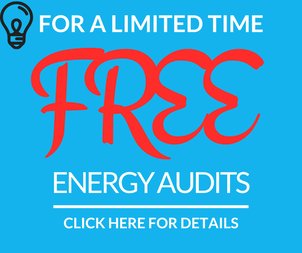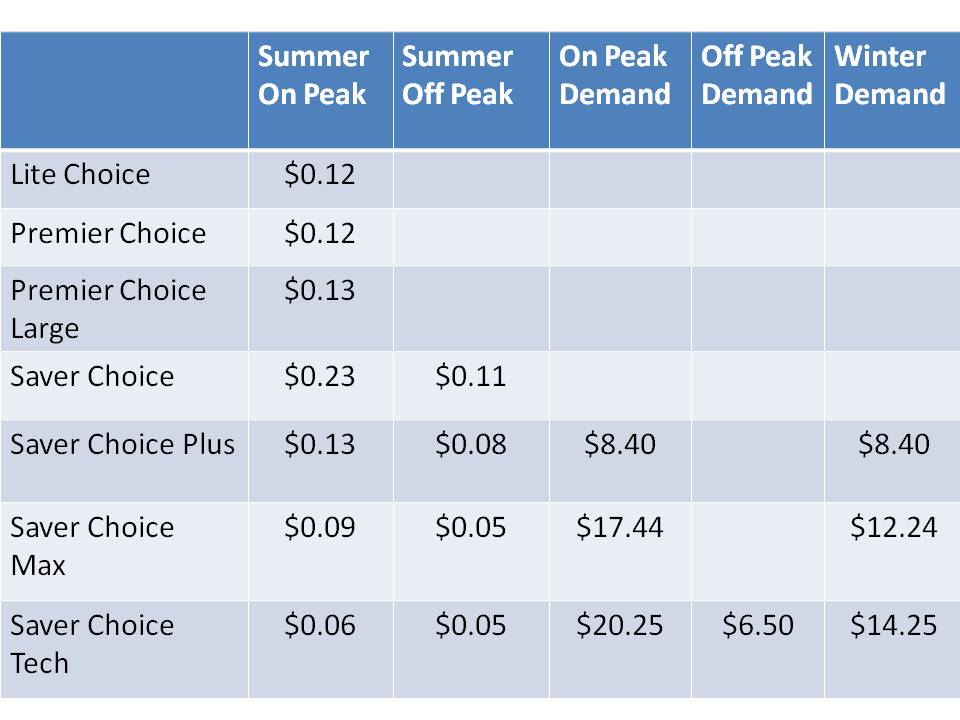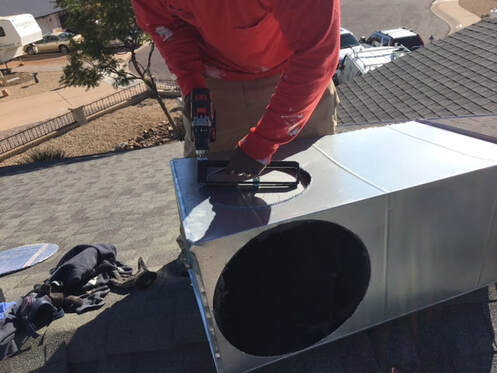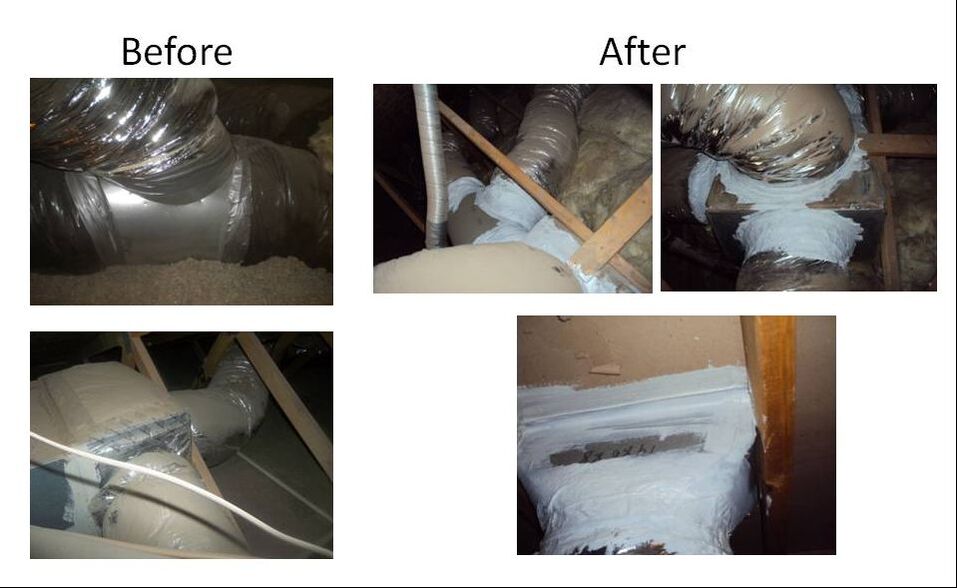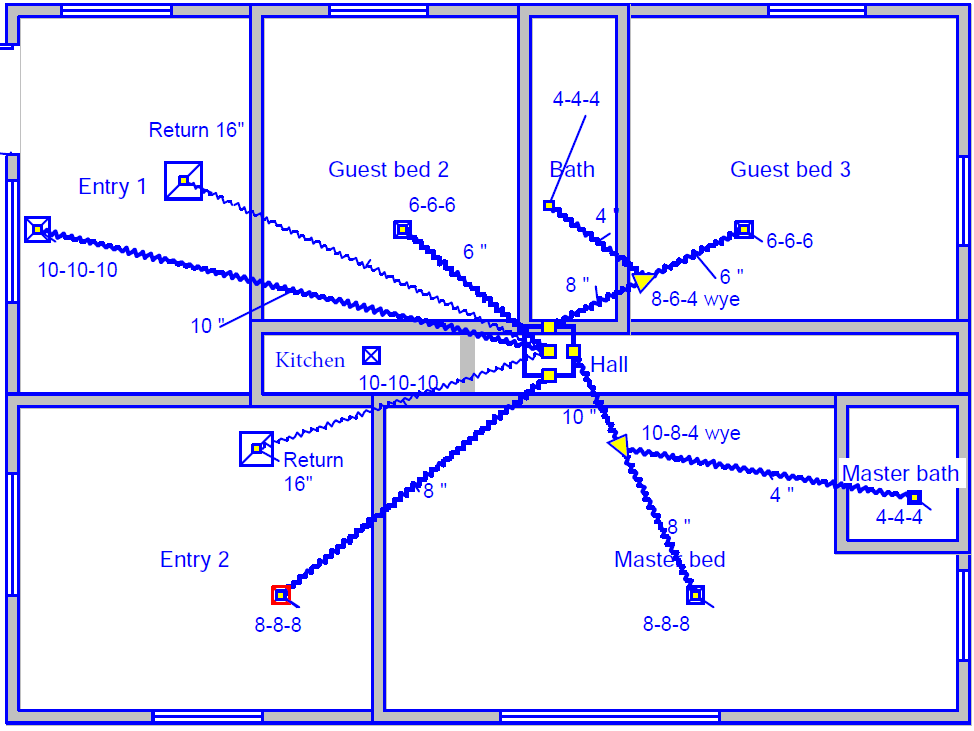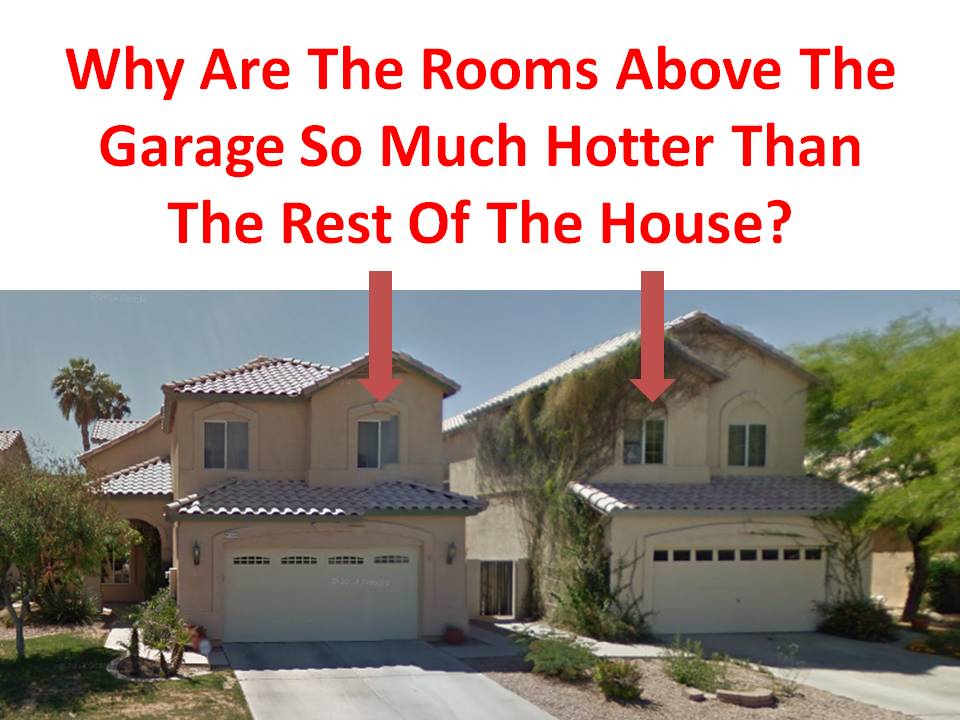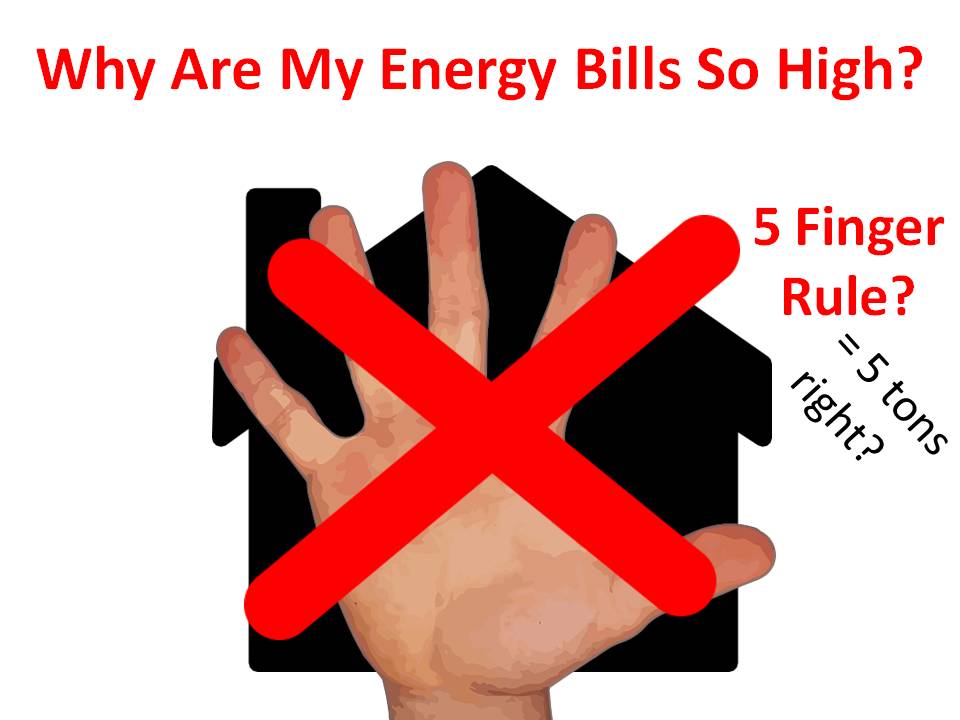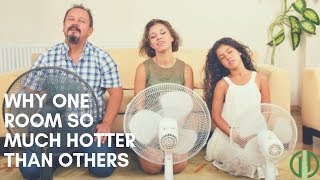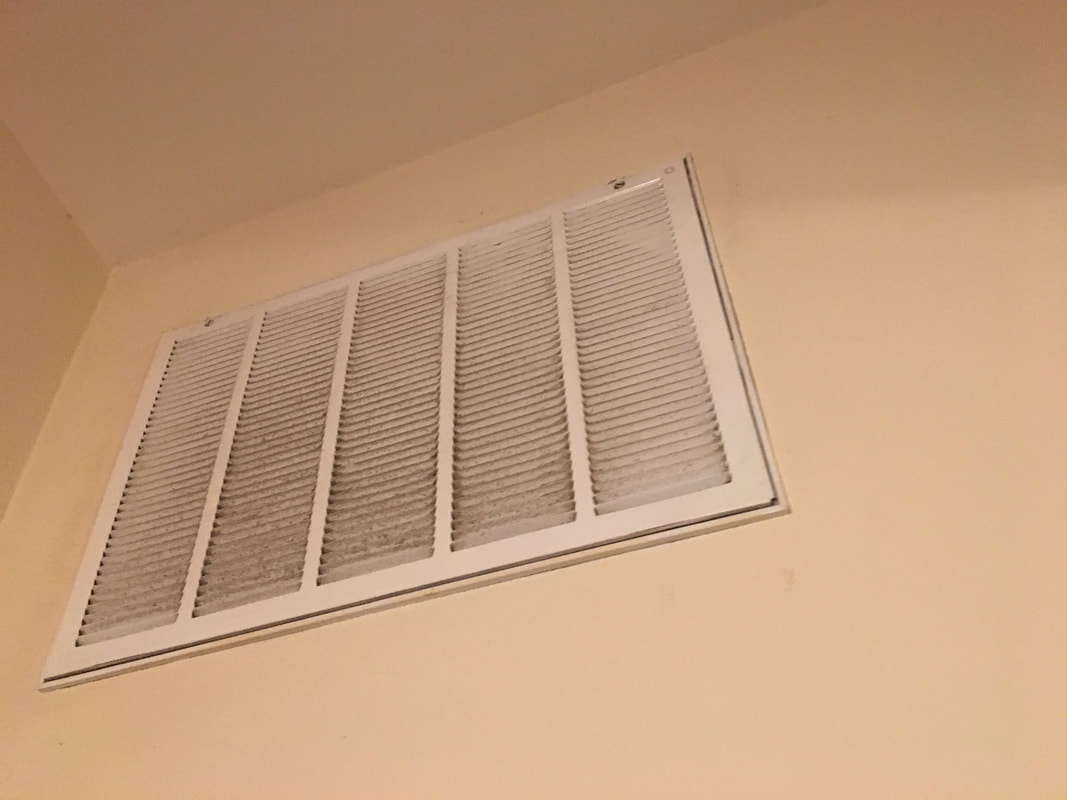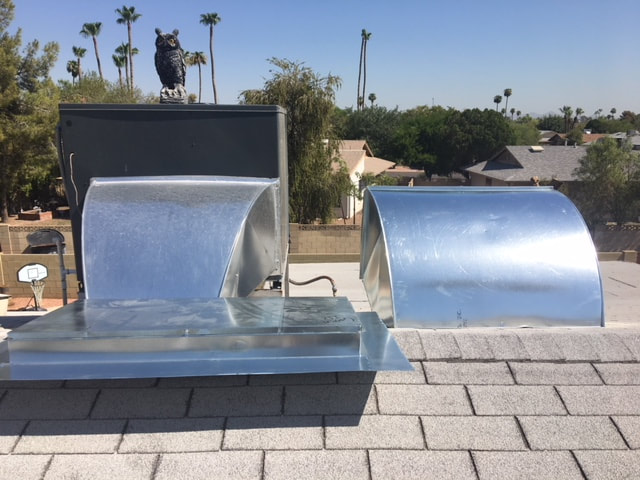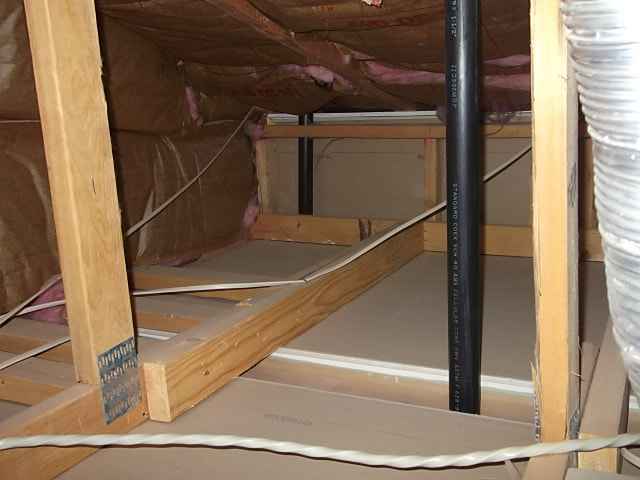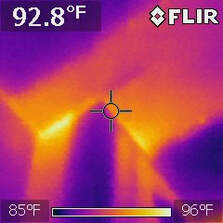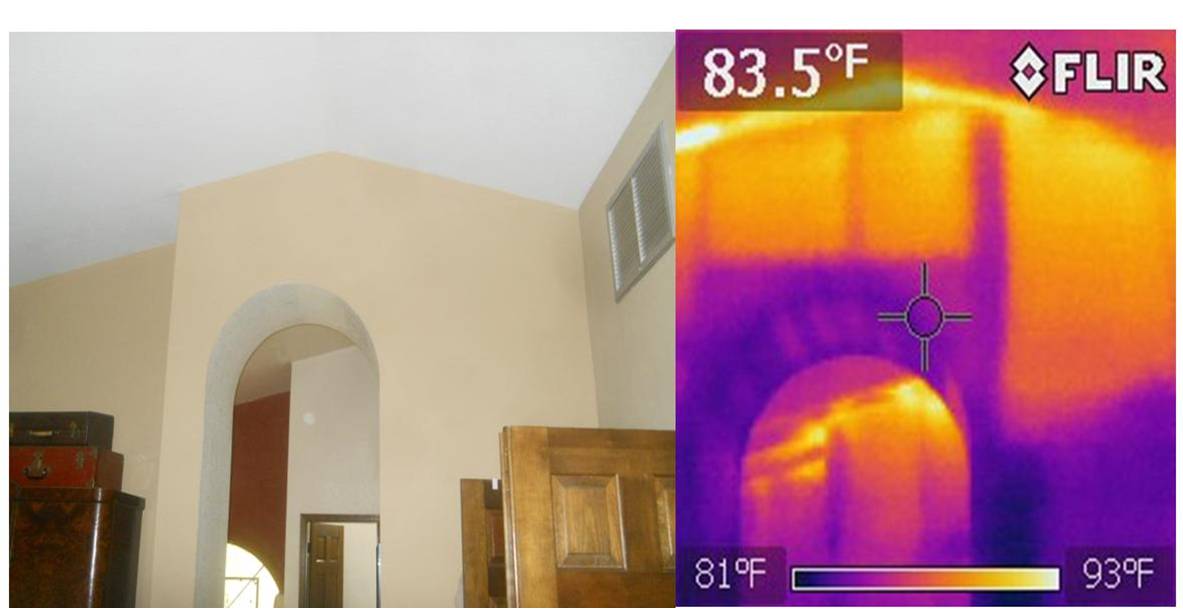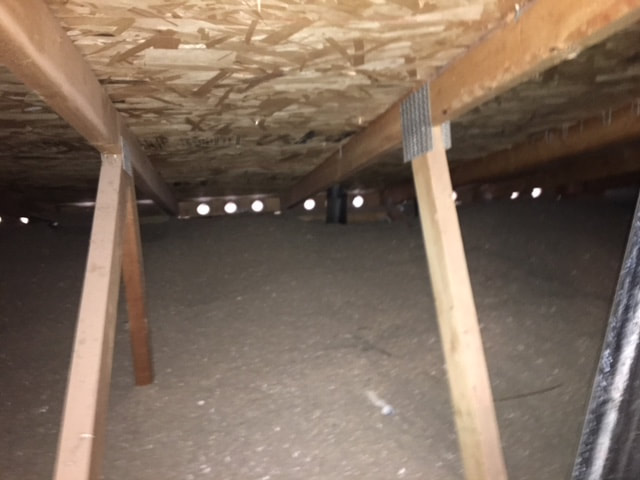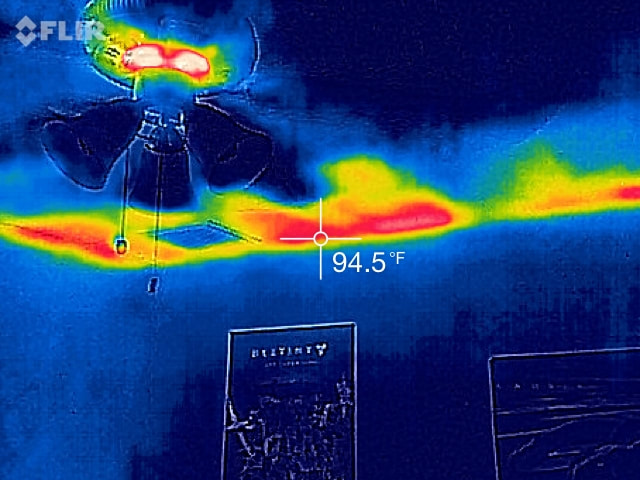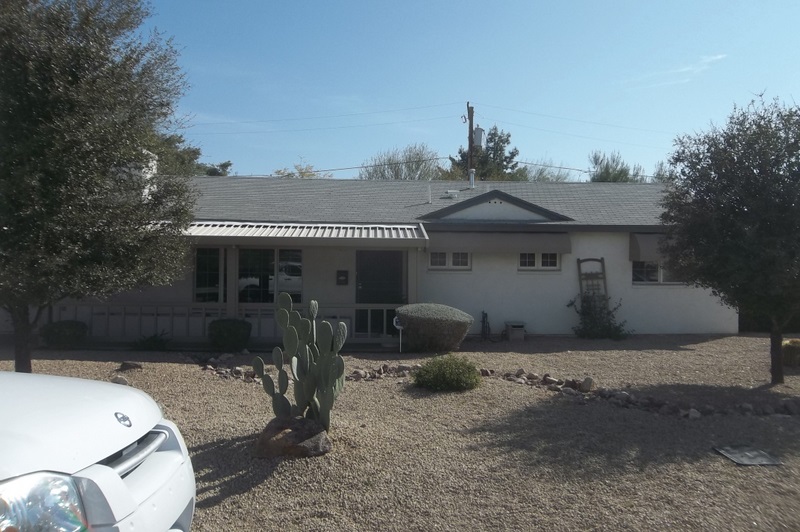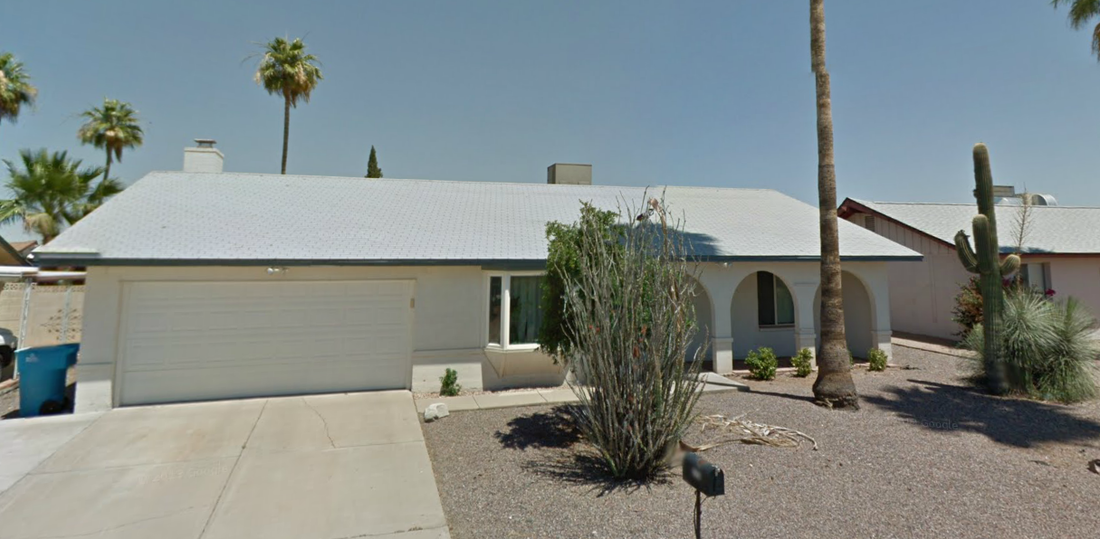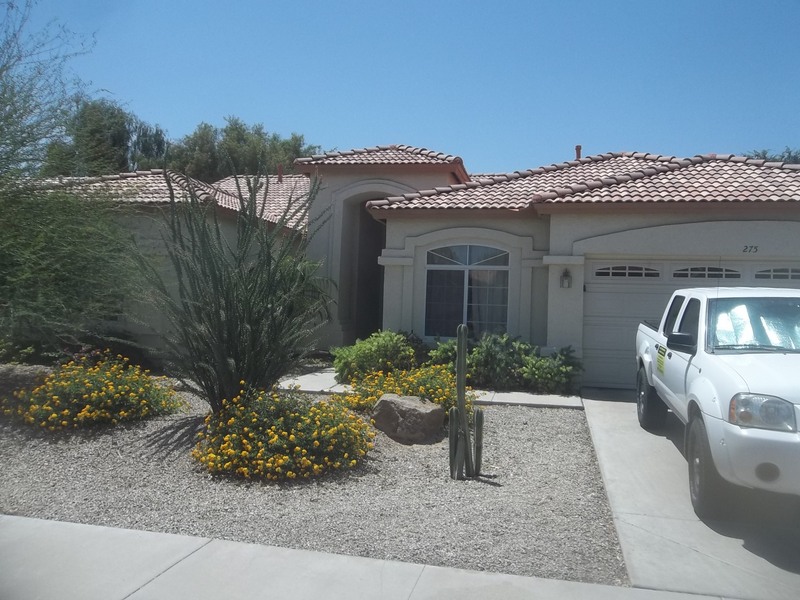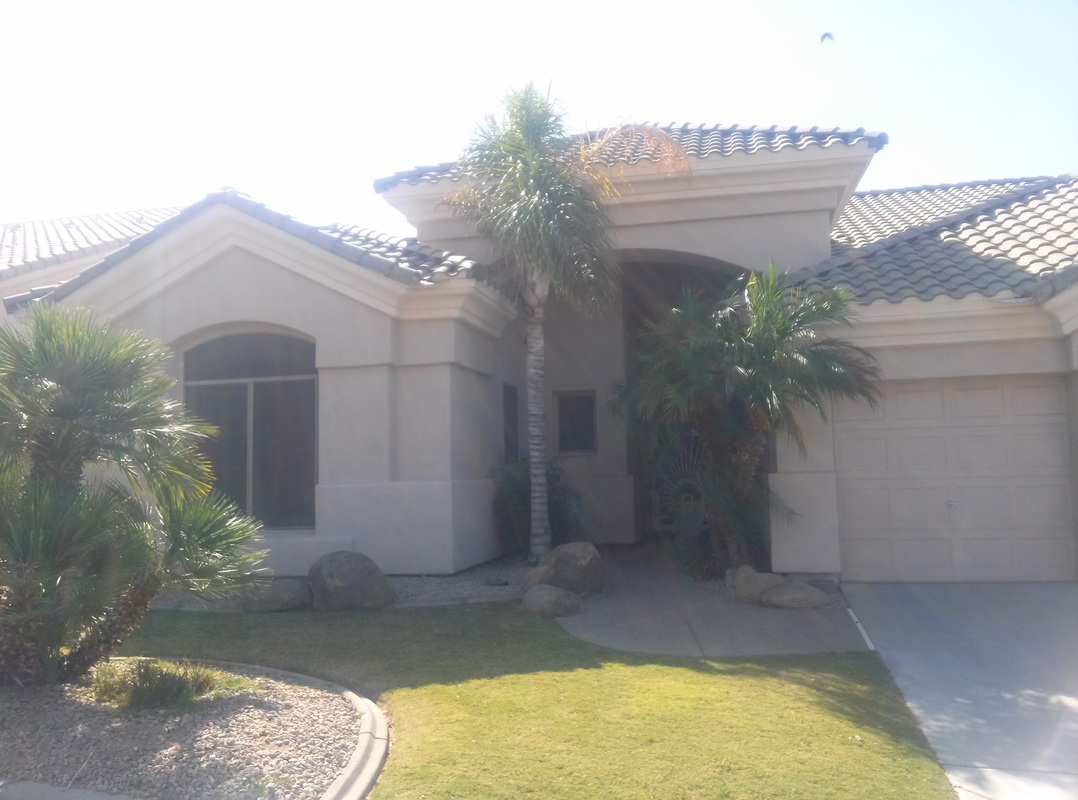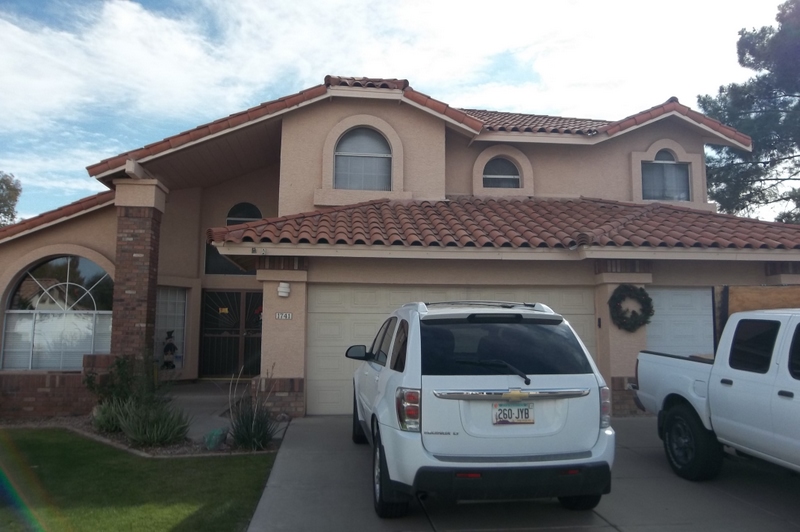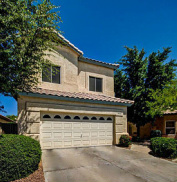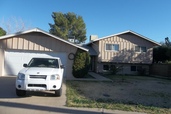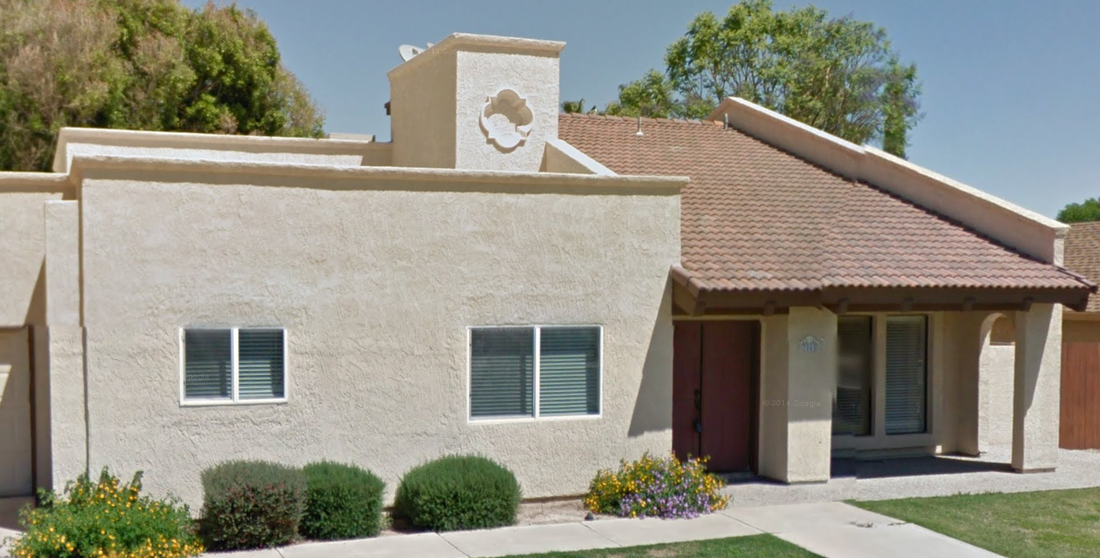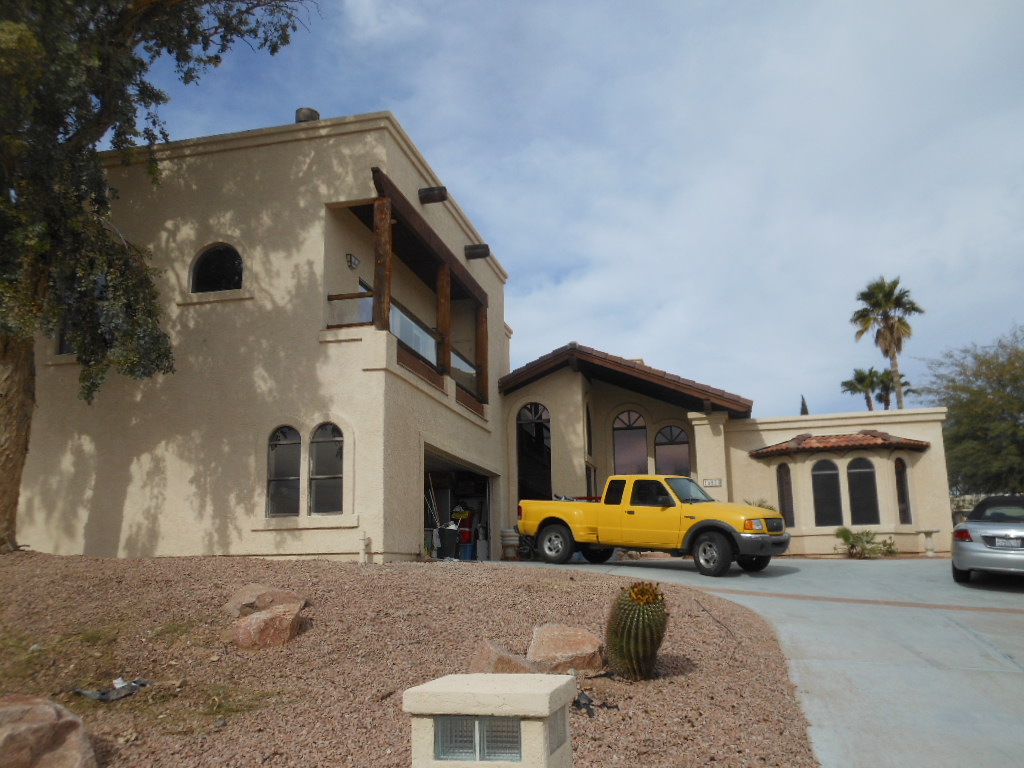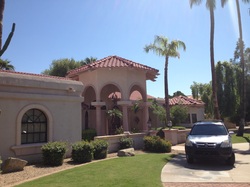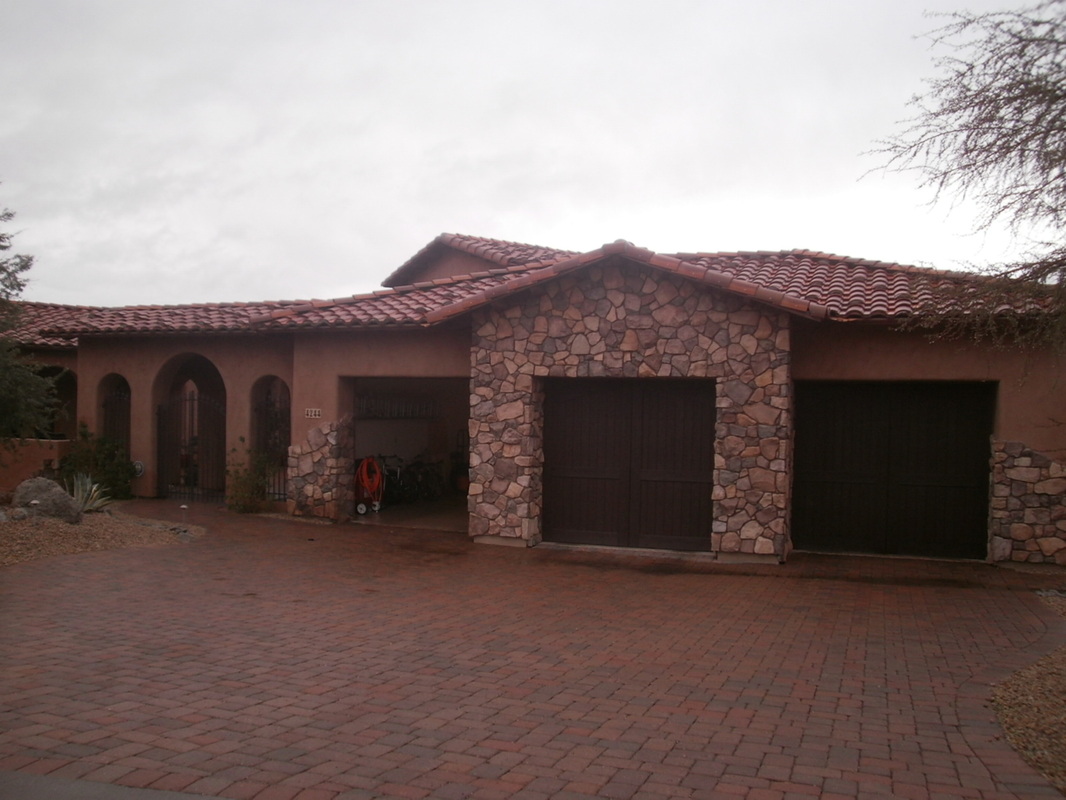|
Supercooling aka precooling your home is an effective strategy to lower your energy bills by lowering your thermostat during off peak hours, buying cheap energy, and then raising your thermostat during peak hours, ideally so your AC system never turns on during peak hours. To supercool your home, you take the temperature to extremes and go down to 70 degrees off peak, and then raise the thermostat to 84 to 86 degrees on peak. With APS rate plans shifting towards more demand based rate plans, they punish homeowners for using their AC systems when it’s hottest out from 3-8 pm by charging a demand fee. How the new APS rate plan works is from the peak hours of 3-8 pm, in addition to a premium energy cost, APS tacks on an additional demand fee when your energy usage exceeds a certain amount every 30 minutes. Demand is a term that means how much energy your home is using at any time. This demand fee can be a significant part of your monthly energy bill and most homeowners are hardly aware it exists. APS calculates your demand fee every hour based on your home’s highest energy usage during that hour. A demand fee is similar to watching Netflix back when our internet speeds were slower, if you have two people streaming videos at a time, your internet speed may slow down because the usage is to much at one time, just like if you are running both air conditioner systems at the same time, you’ll reach a demand peak and APS will charge an extra fee. Not all APS rate plans have a demand fee, but the ones that do not have a much higher kWh base fee. The APS rate plans that do not include a demand charge are the Lite Choice, Premier Choice, Premier Choice Large and Saver Choice. Of the APS plans without a demand charge, we recommend only the Lite Choice if you are single and keep the thermostat at 80 degrees day and night. All the other APS rate plans will pay more than the rate plans with a demand charge. The APS rate plans that include a demand fee are the Saver Choice Plus, Saver Choice Max and Saver Choice Tech. APS makes it so that the demand based plans have the opportunity for more energy savings than the rate plans without a demand fee because of these precooling strategies. How To Take Advantage Of APS’s Rate PlansSince APS calculates their demand charge every hour, if you have two air conditioners, run only one of them for 30 minutes, then the other AC for the next 30 minutes, never having both of them on during the same time. This way your entire home will stay cooler than if you run only one system most of the day, then after 8 pm the other unit plays catch up trying to cool a hot part of the house, AND you only pay a demand fee of 0.5 x the highest energy usage during that half hour, around 1.8 (average energy usage for a 4 ton heat pump).
Alternatively, the strategy above is better than any of the following scenarios: 1. Having both ACs running at the same for a full hour or your normal temperature range of 77-80 degrees. 2. Having one AC cool one part of your home for a full hour, then having the other AC cool the other half of your home for the next hour. By properly shifting your AC run times, the new APS rate plan of Saver Choice Max can yield lower energy bills.
2 Comments
Even if you have a trust air conditioning contractor you’ve known for years, maybe they are an in-law or you know them from your church, I would still make sure you have these home performance upgrades done on every new AC unit installation, regardless of what they tell you. I know that having a trusted AC contractor is a necessity in Phoenix and once you’ve found someone you trust, you want to save their number in your phone in case you come home one summer to find your AC system not cooling properly. Even when we perform energy audit on a home and a customer tells us they have an AC contractor they love, we say, “Good!” We want you to keep them but as owner of Green ID, one of my personal missions is to take care of our customers and I’m going to tell you what’s best for your whole home to work well to help lower energy bills and increase your comfort. I believe if we help solve our customer’s needs, we will profit from it through referrals, home performance work or some other way though it may not be from becoming your AC contractor of choice at the moment. I’ve seen firsthand from training our own AC technicians- from guys fresh out of school, guys with a couple years of experience and technicians that have owner their own AC companies for years before closing their businesses, that experience does not mean these best practices are followed or they even know why we want to install them. Some smaller and one man shop AC companies may not do these upgrades because they require more labor and a skilled helper, and they may not be busy enough to keep someone on full time. Other larger companies may say that they do some of these upgrades like sealing the ductwork but use tape as a sealant, which only lasts a couple years. Not all these upgrades are or should be “free” or included in the cost of a new unit, but they are essential for a new AC unit to operate properly and in most cases it is money well spent, much more in-fact than money spent on higher SEER systems.. get these basics down first for your home, then start adding on the toppings. Upgrades That All Air Conditioning Contractors Should Follow When Replacing An AC Systems 1. New plenums. Reusing your existing plenums is an acceptable practice but the problem is when your AC systems do not have plenums to begin with and your AC contractor doesn’t plan on installing any on a new AC system. Every HVAC system, whether is a split system or a package unit on the roof, needs plenums, preferable made from sheet metal, not ductboard. Plenums are metal boxes that are located between the ductwork and the AC system. They allow airflow to mix and can handle a much larger amount of airflow than flex duct can. Yes, they require more labor to install and add to the cost, but this is a must have for me and important enough for good airflow that we include plenums in our installations. 2. Ductwork and unit penetration sealing. Sealing the ductwork is a no brainer but somehow this still gets overlooked and we will feel cold air pouring out of the ducts on brand new AC systems. Having a high efficiency AC system that has leaky ductwork is like driving a Prius with a hole in the gas tank. In the case of air conditioners, it would be better to save thousands and purchase a standard AC system but seal the ductwork to make sure all the cold air you pay for gets in the house, not lost to the attic. It’s also important to ask your AC contractor how they seal the ductwork. If they mention tape in any form (with the exception of mesh tape), do not consider that ductwork sealing. Mastic aka pookie, or Aerosealing is the only, and best way to seal the ductwork. 3. Properly sized ductwork. Yes there are rules of thumb you can use to size ductwork and returns, but taking measurements is the only way to know if your ductwork is sized properly. This is where an energy audit is a necessity before the AC is installed, otherwise there is no way to know if what you have is right. Installing new returns is an upgrade that depends heavily on having a return plenum present (see #1). If you have a return plenum present, you can’t really go wrong with installing additional returns in open areas of the house. Be careful when installing new returns in bedrooms because you could easily cause an imbalance in the system, making the AC unit work harder and causing unwanted temperature differences in the rooms. 4. Proper air balance. If you have hot rooms or one room that gets too much airflow and another not getting enough, a new AC system won’t fix that problem, you need an air balance. Often times, contractors will just leave your existing ductwork the exact same way it was attached to the plenum when a new AC system is installed. If the ducts are not resized, relocated or balanced, your home will likely have the same airflow problems with a new AC unit. Often an AC contractor will put a new return in a hot room as their go-to fix, but in our hot Phoenix summers, this solution isn’t enough and the room will remain hot. You may also like...Maricopa County is the fastest growing county in the nation with the population expected to grow by 80,000 in the next five years. Driving down the street, it’s not surprising to see Canadian licenses plates or meet people from IL, CA, NY or WA. With all these new transplants you would think some of the good home building qualities would rub off on the way Phoenix home builders build houses...unfortunately home builders are slow to catch on which is why I've been asked so many times, "where we are from we have returns in every room, why does my home only have one return?" Good question. On average Phoenix homes have only one return for each AC unit or for every ten supply vents there is typically only one return and this ratio is way off. The Land Of No Return, Why Is Having Only One Return A Bad Thing During our energy audits we check and measure if the ductwork is properly sized and one common finding is that the returns are undersized and need to be larger or a second return added. If your home has only one return per AC system there is a good chance your house needs another return. Imagine breathing through one straw, it doesn't matter how hard you breathe and suck air in, you won't be able to get more air in your lungs until you add more straws to breathe through. The same is true for an HVAC system that is trying to suck a lot of air through too small a return. The AC unit is noisy and it has to work a lot harder because it’s “starved” for air. That means if you have a 4 ton AC system, you are probably only getting 3 tons of air into, and out of the unit because the return duct is too small. More returns need to be added to give your AC system 10 straws to breathe through and from a full 4 tons of air in. Why Is Having More Than One Return Good? We’ve listing the benefits of adding a second return and increasing the size of ductwork going into the AC system below. - Better air circulation in the home - Increased air into the unit means more capacity of the unit (your 4 ton AC system will be pulling a full 4 tons of air) - Quieter every time the unit comes on - Lower energy bills and better operating efficiency Not All Returns Are Equal Just like insulation contractors that "blow and go" and don't think twice about things that compromise its effectiveness like misalignments and air leakage, how a new return is installed is just as important as having an additional return. If the return is not enlarged at the closest location to the AC unit as possible, it will do no good to add another return. The way to fix undersized returns is to remove the bottleneck at its source. Think of a dam that restricts the water supply downstream, it doesn't matter how big you enlargen the reservoir upstream, until the flood gates of the dam open, you won't be able to release more water into the spillways. This is a point most AC contractors miss and takes some planning, training and inter-company communication to get right. Most contractors make the mistake of keeping the same size ductwork into the AC unit and splitting it into two smaller ducts, one for each return. In most cases, that doesn't help because the volume of air is still the same, it's just split into two different rooms now so the room that had the existing return will suck less air in and be weaker than before. Package Units On The Roof If your AC is on the roof and you had an old Geottl unit from the 1980s you likely have a restrictive elbow. This means that no matter how many returns are added to the house won't help because the bottleneck is the elbow on the roof. Goettl and Chas Roberts used twist elbows in all their installs and even if the AC unit was replaced, 99% of AC contractors re-use the existing roof jack that goes into the roof and put the same style elbow back on. So you probably got a new elbow but it's likely a twist elbow because that is what was installed before. The way to fix the problem is to install a side by side elbow with a return plenum. This type of elbow does not restrict the airflow. It requires more labor and skill to install and have yet to see a typical AC contractor even recommend this be done because it’s a laborious process most AC contractors see a package unit change out as an easy day with no attic work. We train out staff to recognize the correct bottlenecks with roof mount AC systems and how to spot restrictions in the attic. That needs to be translated to proper measurements, fabrication and communication to the install team. Making the change from a twist elbow to a side by side elbow adds about 5 hours to a job that would only take 2 hours if the elbow style was remaining the same, which is why most contractors don’t dare, but the end product means a is definitely worth it for the consumer, our customer. Spilt Air Conditioner and Furnace Units If you have a condenser outside and a furnace and coil in the attic, closet or garage, chances are you only have one return for each HVAC system. In the 1980’s Arizona homes started going away from using sheet metal trunk ductwork to using only flex ductwork. Flex ductwork is very easy to install, almost anyone can do it compared to the skill required to install sheet metal ductwork. With the ease of flex duct installation came at the cost of following best practices for ductwork installation. AC contractors made mistakes and got sloppy by using smaller ducts than the plans called for, using too many wye splits, not sealing the ductwork properly and using the cheapest registers possible. We have a saying that building a home to code is the worst you can legally build a home for a reason. The code is the minimum standard and for ductwork design and installation, we still have a lot of room for improvement.
If you take a look at your air handler/ furnace in the attic, you want to see two large metal boxes attached to each end of the AC system. Those boxes are called plenums and you want two of them, one for the supply side and one for the return. 50% of the time, we find air handlers/ furnaces only have 1 plenum on the supply side and nothing on the return. This means that the return flex duct goes straight into the unit, which is a red flag for our inspectors. When performing an energy audit, we are always looking for a return plenum first. If an AC system does not have a return plenum, we typically want to add one before adding new returns unless there is no room in the attic. The size of the new return will depend on our readings and how restrictive the airflow is. In general we want to see the following sizes of return ductwork. 22” return on a 5 ton AC unit 20” return for a 4 ton AC unit 18” return for a 3 ton AC unit 16” return for a 2 ton AC unit APS (Arizona Public Service) and SRP (Salt River Project) are the two major energy providers in Arizona. Even though they both provide the same service, APS and SRP have some major differences that play a role in deciding where some customers choose to live. APS has a larger service area and is the larger energy provider, covering most of the Phoenix area. SRP’s service area is located more in the East Valley with some exceptions in Glendale, Laveen, Ahwatukee and south Scottsdale. The Green ID energy audit steps will be the same for an APS customer or an SRP customer. We still conduct a blower door test to measure air leakage and duct leakage, use a thermal camera to scan the home for insulation defects, conduct a thorough attic insulation inspection and check the heating and cooling system. But an SRP energy audit differs from an APS energy audit in the way we approach energy savings. APS and SRP have important differences that have implications in how much energy our customers save and what temperature strategies we recommend. We review the major differences between these two energy providers in Arizona and how you can take advantage of savings. Here Are Some Of The Major Differences Between APS And SRPPeak Hours and Rate PlansAPS has peak hours between 3-8 pm. SRP’s peak hours are 2-8 pm. Both utilities recently implemented these major changes in their peak hours. APS changed their peak hours along with a major change in their rate plans with an average 33% increase. SRP changed only their peak hours and kept their rate plans the same. This is part of a national change all utilities are making to more demand-based rate plans, penalizing users for using energy when they need it the most. Demand ChargesAPS peak hours penalize homeowners much more than SRP for using large amounts of energy by charging a $15 per day demand charge on top of a peak hour rate for almost all of their rate plans. SRP has a demand charge but only for solar customers and the E-27 pilot rate plan. I wouldn’t be surprised if SRP changes all their rate plans to a demand-based charge in the near future. RebatesAPS essentially offers only a duct-sealing rebate. SRP offers many other rebates including insulation, shade screens, high-efficiency air conditioning systems and pool pumps. APS technically has air sealing, HVAC and insulation rebates but they have made these rebates difficult to achieve. Energy RatesRecently, APS implemented significantly higher energy rates for all customers. These rate increases came out to be about 33% higher on average. In the past, APS increased their energy rates only by 6% year to year. SRP has not yet implemented a huge jump in increasing their energy rates but it’s likely coming. Ownership & PoliticsAPS is owned by Pinnacle West Corporation, a publicly traded, for-profit company. SRP is a non-profit utility company. Both companies are essentially monopolies but APS is much more profit-driven and goes to extremes to ensure its profits. APS pours dark money into politics to ensure their candidates are elected to the Arizona Corporation Commission, a group that is supposed to look out for the Arizona consumer but instead votes for APS’s interest. APS also sponsors many events for our State Governments. APS does provide private funding for weatherization programs to help low-income families pay for efficiency upgrades to their home. SRP is known for better customer service and communication but they still tend to follow APS rate increases and time of use plans. What Can You Do?In general APS has higher energy rates than SRP, less efficiency rebates and they are less consumer friendly. Whether you are an APS vs an SRP customer, your decision to save energy in your home is still an important one. While APS may not have the same financial incentives in the way of rebates, our energy audits are a gateway to saving you money overall. Saving money also means putting less of a demand on your energy provider and less money in their pocket. Unless you’re in the process of buying a new home, you can’t pick the energy provider in your neighborhood but you CAN take steps to being more energy efficient. Green ID’s extensive experience with both providers allow us to make the best recommendations on savings, regardless of whether you are serviced by APS or SRP.
SRP changed their Cool Cash Rebate Program for high efficiency air conditioners. The Cool Cash rebate program used to be SEER based, where SRP gave high rebate amounts for high SEER systems. FYI the higher the SEER, the more efficient the system runs and the lower the operating costs are. In SRP's new Cool Cash Rebate Program a minimum SEER of 16.0 is required.
Another big change to SRP's Cool Cash Rebate Program are that they new provide rebates for ductless mini split systems! Ductless mini split systems have become increasingly popular to help cool casitas, hot rooms and add on rooms. Ductless mini split systems are very efficient and very quiet. At Green ID, we've been installing more mini split systems not only because of demand but they are a great way to cool a hot room and essentially shut down the rest of the house for empty nesters. The SRP Cool Cash Air Conditioner Replacement Rebate offers customers a $1125 rebate for high efficiency AC systems or ductless mini-split. SRP has a tiered AC rebate program, with a minimum SEER of 16.0 is required to qualify. Details of SRP Cool Cash Rebates
Let's say you purchase a 5 ton variable speed heat pump, your SRP Cool Cash rebate would be 5 tons x $225 = $1125. Or let's say you purchased a 1.5 ton ductless mini split system, your SRP Cool Cash Rebate would be 1.5 ton x $225 = $337.5. To qualify for the rebate program, Green ID will perform a load calculation on your home as well as certify the airflow and charge are within the manufacturer's specifications and submit all the rebate paperwork on your behalf. Going into hot, dusty attics is something we do every day for our Green ID energy audits, all year round. While crawling around all those attics we get asked a lot “does my insulation need to be removed?” Many homeowners notice dust streaks around their registers or a thin film of powder on their furniture and think their source of dust is from the insulation in the attic. Other homeowners feel like the dirty insulation becomes useless with age, especially after settling below the attic studs. This may be true, but is insulation removal necessary? This is such a common question I decided to go into more detail on when attic insulation should be removed and when it can stay and the costs you can expect. When Insulation Removal is NecessaryThe Attic Was Infested With Rats Or Other Critters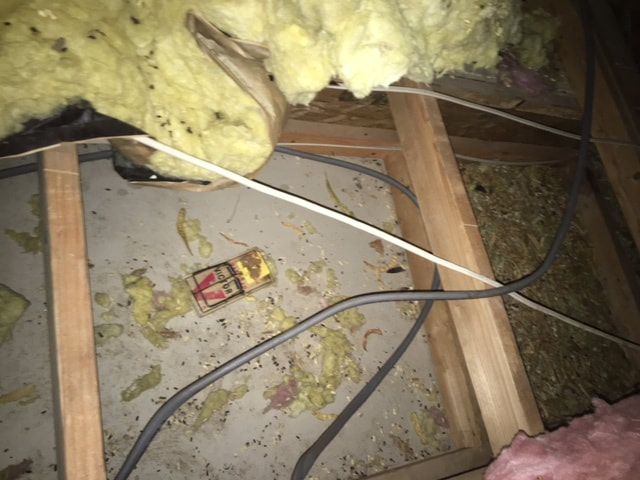 Roof rats are a common problem around neighbors with fruit trees. You may even hear them tapping around your attic at night. These critters will build nests and use the insulation as their home while seemingly multiplying and inviting all their friends to their new home. Rat urine and droppings are hazardous and need to be removed along with all the insulation in the infected areas. If a rat has been in an area, a trail of droppings will follow them. In this situation, insulation removal is necessary and the attic must be disinfected before blowing in new insulation. For our Green ID insulation service, we prefer using cellulose blown in insulation because of the fire retardant chemical borate that’s used is also a rodent deterrent. Currently, it can be sucked out using an extraction machine. If the attic has fiberglass batts, they can be taken out by hand. Water DamageIf you’ve had a roof leak or the condensation from your air conditioner has spilled out of the drip pan onto your insulation, the insulation can hold moisture for a long time and become a source of mold spores or mildew. It also will lose its effectiveness at slowing down the transfer of heat into your home once it’s wet. If a small area was affected, only that portion should be removed, the entire attic insulation does not have to be removed With Spray Foam Insulation To Air Seal The AtticIn hot dry climates like Phoenix, we typically use open cell spray foam and remove all the insulation from the attic floor (we explain why below). Spray foam is an insulator and air sealant in one and with the attic ventilation completely closed off, there’s no more dust coming in from the outside. We want to create a completely sealed attic space which will naturally also improve the air quality of the home plus reduce your energy bills When You Do NOT Need To Remove Your Attic InsulationThere are times when we would not recommend removing your attic insulation. This may contradict what some companies tell you but hear me out Old InsulationHaving old insulation may settle over time and you may be shocked to see the studs of your attic floor showing, but the insulation does not have to be removed. Yes, you probably need more insulation added (air seal the attic floor first) but even old insulation still has its R-value, or insulative properties. Unless it’s water damaged or rodent-infested, you do not need to remove your attic insulation. Remember, if you are concerned about dust and air quality, you need to have your attic air sealed to separate the attic from the house before you add more insulation, otherwise you’ll just make the dust problem worse. A thorough Green ID Energy Audit can help identify whether your attic needs sealing or additional insulation. When Your Energy Audit Company Tells You They Need To Remove All The Fiberglass Batt Insulation Because It Is MisalignedOf the few insulation companies that actually know what the problem is with “misaligned insulation,” I would wager that most are energy auditing companies. And of those energy auditing companies, there are some that are lazier than others and would recommend you remove all the fiberglass batt insulation in the attic to fix the misalignment problem. The problem with this approach is that it will cost you twice as much and unnecessarily add a day to your job. You’ll also be charged an extraction fee to remove the insulation, which takes at least one day. Then you’ll have to pay to have your entire attic reinsulated, which will take another day. Green ID is always looking for the best solution for YOUR particular home, not just the quick fix. YOU DO NOT NEED TO REMOVE YOUR FIBERGLASS BATT INSULATION. It still has its insulative properties and just needs to be installed properly to work right. What I recommend to our customers when we encounter misaligned insulation is a process called lift and fill. This method does not require more man power, but it does require more skill. This is why I perform all our lift and fill jobs myself or someone I’ve trained and worked with for over a year. Lift and fill requires us to lift and blow loose fill insulation under each fiberglass batt, then replace the batt and blow loose fill insulation on top, creating a sandwich of fiberglass batt insulation. The loose fill insulation is able to form around canned lights, under electrical wires and cross studs and in-between stud cavities. If done properly, the difference in comfort is night and day. We end up saving you money by not charging you double to properly insulate your attic. If you believe your attic needs this kind of insulation service, you can contact us today to schedule an appointment How Is The Insulation Removed From The Attic?For loose fill or blown in insulation, we use an extraction machine to suck out the insulation. We use the same machine to suck out the insulation when we are applying spray foam along the roof decking. Many homeowners have tried to remove the insulation by hand in trash bags but anything over 500 sq ft is a monumental task and has always proven too much work. The extraction will suck out the insulation from a 6” hose and fill 20 gallon bags. A typical 2,000 sq ft home will use about 6-10 extraction bags. For fiberglass batt removal, it must be done manually, one batt at a time How Much Does Insulation Removal Cost?If, during your Green ID Home Energy Audit, we determine that insulation removal is necessary, the cost will depend on the existing depth of insulation, square footage, attic access and offshoots, and if it is rodent infested. The cost will range from $0.70-$1.50 sq ft for extraction. Will Removing My Insulation Make My Air Quality Better?If your home has lots of air leakage and connections from the attic into the house, then yes. But, the attic floor must be air sealed after the insulation is removed or spray foam applied to the roof decking. Simply removing the insulation, then blowing new insulation is not guaranteed to improve the air quality because all the leakage pathways from the attic into the house will still be present. Once all the insulation is removed, the attic floor needs to be air sealed to stop the transfer of attic air from going into the house. I also recommend having each room pressure balanced and ductwork sealed. Room pressure balancing is important if you notice doors close by themselves when the air or heat comes on, or you notice a rush of air under the door with the HVAC system running. Not fixing a room pressure imbalance can cause outside air to come in the home from the outdoors or the attic because that room becomes pressurized while the rest of the house gets put under a negative pressure and sucks air in from the outside. Having spray foam applied to the roof deck creates a sealed attic space with no ventilation. This creates an air tight attic where the insulation cannot collect dust from the outside and it cannot enter the home. Spray foam does off-gas for about 6 hours after it’s applied but once it’s cured there is no ongoing off-gassing. In Phoenix, our attics are vented to the outside so many layers of dust can accumulate in the insulation, especially fiberglass insulation. That dust can then find its ways into your home through air and duct leakage pathways. Attic insulation dust is a carcinogen and harmful to breath. Making The Decision To Remove or RepairIt can be challenging and overwhelming to know what to do about whether you need insulation service, ductwork repair or other home improvements. That’s why we offer a straight-forward Home Energy Audit that will assess the airflow of your home and help determine any necessary work. Contact Green ID today to get started. We’re happy to answer questions and demystify the process of making your home run efficiently and safely! #1 Fair and Effective Recommendations- An true energy audit should be unbiased and not product specific. If your APS or SRP energy auditor recommends products like radiant barrier, windows or solar these are red flags that you are not getting a true energy audit. We have gone into many homes that have had energy audits done by companies that clearly missed the low hanging fruit of recommendations and instead offered to seal 20 canned lights and put a radiant barrier in a home for almost $8,000. If radiant barriers, canned light sealing or new windows are a major aspect of your auditors recommendations or sales proposals, it's time to politely show your rep to the door and look elsewhere.
#2 Credentials - Be sure that the energy auditor/inspector of choice has the minimum insurance, bonds, licenses and credentials. The minimum requirements for participating in most local programs are:
#3 Beyond The Energy Audit - Make sure the company you are considering takes a whole house approach. They should perform a comprehensive energy audit and also have the resources and capability to perform a full spectrum of appropriate efficiency retrofits. The energy auditor/inspector may cover all aspects from audit/inspection to retrofit, or work closely with certified and authorized partners to handle everything. We emphasize this point because there are product specific contractors in existence who may use the efficiency audit and audit program platforms to sell their specific products and services regardless of a real or appropriate need. Examples:
The bottom line is if you call a company that doesn't specialize and perform a whole house approach to energy auditing and repairs then you may likely be calling out a sales person for a specific product. Ask about the whole house approach to energy efficiency when you call for an energy audit/inspection. #4 The Right Tools For The Job - The energy auditor should have the right tools for the job. The big question is, "Do they include infrared photos and scanning in the program rate?" If they are charging extra that's a big "NO HIRE" from where we stand. Infrared should be included. Chances are, if they include infrared, they most like have the other tools necessary. However, here is a list of other "must have" equipment items:
#5 No Shortcuts - There are certain tasks that are required to be completed for proper energy audit performance and certification. Here they are: Exterior Inspection:
Interior:
#7 Ask The Right Questions - Look, it's your house and your money, you are hiring a professional to be a professional. Let them do what they do. That is why you asked them out. But before hiring, here are some questions you should be able to get solid answers to.
#8 Signing Documents... - You may be required to sign a utility company rebate form and/or a general agreement prior to the inspection. However, some companies may try to get you to sign a contract that states you must use their company after the audit if you decide to get any repairs done. Be sure that you are signing for audit only and that you are free to use who you want for the repairs - This enables you to get competitive bids, negotiate and make intelligent and qualified decisions. #9 Get What You Paid For - Be sure you own the final report, data and images. The final report is part of what you are paying for. If you decide not to use the auditor's services for the retrofit, then you can supply a copy of reports, data and images to another contractor and skip getting/paying for a second inspection. If you’ve ever gone out to your garage to find melted candles or dead drill batteries from the intense Phoenix heat, you’re not alone. You may be shocked to learn that Phoenix garages come uninsulated from the builder, leaving them to get hotter than the outside during the summertime often reaching temperatures of 120 degrees or more. Many customers want a way to cool their garage so we’ve complied a list of best ways to cool a garage in Phoenix. 1. Additional vent ducted off your main HVAC system. If you AC system is oversized (like many are), this may seem like a good option to add another register and duct from the HVAC system into the garage. However even a standard two car garage requires 18,000 - 24,000 BTU of cooling capacity, and something that no AC system has the additional capacity to do. In our experience, adding an additional register in the garage is barely noticeable and hardly makes it more comfortable, a two garage is just too big. Even when homeowners enclose their garage to make it livable space, insulate the walls, ceiling and garage door panels, an additional two ducts never cool the space down enough. 2. Window AC unit. Window AC units just aren’t big enough to cool a two car, uninsulated garage in Phoenix. The largest window AC units are 15,000 BTUs and can cool 400 sq ft if the space is properly insulated to 78 degrees if left running all day long. If your garage has wall and ceiling insulation, a 15,000 BTU window AC unit would need to run from 8 am continuously all day to keep it comfortable. We don’t recommend using a window AC unit to cool a garage because it will cost about $80 - $140 each month to run during the heat of the summer assuming a well insulated garage ceiling and walls. 3. Swamp cooler. Swamp coolers are an inexpensive way to cool an area however evaporator cooling doesn’t work well during temperatures above 110 degrees or in the humid weather of the monsoon season. In the heat of the summer, a swamp cooler would move air through the garage but it wouldn’t help to cool it much. Some homeowners will have us re-duct the swamp cooler duct from the main house to the garage, which can make good use of the swamp cooler. We don’t recommend installing a new swamp cooler to cool a garage however because it wouldn’t be able to cool the garage well during the middle of the summer or monsoon months. 4. Ductless mini split system. Ductless mini split systems are the best way to cool a garage because of the increased size available, superior efficiency ratings and ability to cool a garage much quicker than a window AC unit, swamp cooler or adding a separate register. Ductless mini splits provide greater temperature control than tapping a new supply duct and register from an existing AC system. Ductless systems are like its name implies and have no ductwork to spread allergens or contribute to ductwork leakage. The indoor evaporative coil is mounted on the garage wall so no windows are required for installing mini split systems. Ductless systems are also super efficient, with the lowest efficiency rating starting at SEER 17 system. A ductless mini split system is the best and most cost effective way to cool a hot garage. Whether you have a workshop, car or hobby collection a mini split system is cheaper than a central AC system, cools the garage better than adding another register and duct off your existing AC system, works superior to a swamp cooler and room air conditioner. See how much a ductless mini split system costs in a table we’ve created here. How Much Will Insulating My Garage Help To Cool It? There’s no doubt if you want to keep your garage cooler, it needs to be insulated. By insulating your garage you can expect to cool it from 5-15 degrees. The easiest way to do this is to insulate the garage door panels with insulated foam board. A 1.5” sheet of foam board can be cut to fit into each panel. If your garage door panel gets hit with direct sunlight, that aluminum will radiate lots of heat into the garage. The next step is to insulate the ceiling of the garage with blown in insulation. At least 10” of cellulose insulation should be added above the garage for an R-value of R30. If there is no attic access in the garage, a new attic hatch can be cut in. The final step to insulate your garage is the walls. The shared wall between the garage and the house is already insulated. The other exterior walls of the garage have zero insulation in them. We use a method called drill and fill to drill at least one hole in each stud bay cavity, then dense pack cellulose insulation into each stud cavity. A foam plug is used to close the holes leaving them ready for texture and finishing. What About Venting My Garage? Some homeowners will open their attic hatch to let the warm garage air rise up into the vented attic space. Homeowners have also asked about adding another high-low vent in the side wall of their garage to help circulate more airflow. Both these work but won’t have a noticeable impact on the hot garage temperature. A better ventilation solution is to install a ventilation fan (must be larger than a bath vent fan) in the garage ceiling to actively bring out the hot garage air and vent it to the attic.
SRP has a great rebate program for high efficiency air conditioners but homeowners need to be aware of SRP’s requirements to qualify for the A/C rebate. Many companies offer “rebates and incentives” but they never comply with the SRP rebate requirements and really just hike their original price up so high, then discount it by applying cash back and incentives and in the end, you still end up paying a higher price for a new A/C system and you miss out of SRP’s quality install requirements. You’ll know you are getting a true SRP rebate when you complete these forms. In this post we will breakdown the SRP air conditioning rebates, SRP rebate requirements and the importance of why SRP puts them in place. The A/C system is by far the largest energy user in Phoenix homes, often doubling in the summer months so any savings you can get from a high efficient A/C unit will translate into year over year savings for the life of the system. Only SEER 16 and EER 12.0 or higher units qualify under SRPs rebate requirements. There are additional requirements that SRP puts in place to ensure a quality install and for good reason. SRP Cool Cash Air Conditioner Rebates SRP has a generous rebate amount for high efficiency air conditioners both for split systems and package units in the table below.
All the requirements must be met for the SRP A/C rebates to apply. Typically SEER is given more attention that EER or HSPF ratings. However, SRP requires the EER for good reason. In hot, dry climates like Phoenix, EER is more important than the SEER rating. EER Is More Important Than SEER I like the way SRP has structured their A/C rebates because they put requirements in place that award rebates not only for a high efficiency A/C system, but also to make sure a proper installation takes place. Here is a list of the SRP rebate requirements and explanations.
What Happens If One Of The SRP Requirements Are Not Met? If for example, the new high efficiency A/C meets all SRP’s efficiency requirements but after installation your contractor finds the airflow or charge is out of specifications and will not meet the SRP rebate requirements, you have two options. The first option is to have the A/C contractor fix the deficiencies to meet SRP rebate requirements. Depending on how much additional work is required, this may be done at no cost or at an additional charge. Now let’s say the airflow is out of SRP’s specifications because the ductwork is sized wrong and fix the problem will cost an additional $300 that you do not want to pay. Under this scenario, the unit would no longer qualify for the SRP rebate. Are There High Efficiency Package System Heat Pumps? Just because Trane, Carrier or Lennox do not have a high efficient package system doesn’t mean that they don’t exist. SEER 19 variable speed compressors do exist for package heat pumps. Contact Green ID for a free consultation of our high efficiency A/C systems. Other SRP Rebates SRP not only has rebates for high efficiency air conditioners, they provide rebates for sealing ductwork, adding insulation, shade screens, smart thermostats and air sealing. See the table below for details.
Using the SRP air conditioner rebates are a great way to lower the cost of a high efficiency A/C system while ensuring a quality install. Contact Green ID for a free consultation to go over your A/C replacement options or if you would like a complete energy audit, you can start by taking a quick online survey to see if your home is a good fit. Click here to find a list of all other SRP rebates.
Insulation jobs are not as simple as blow-and-go and mistakes made or overlooked by insulation contractors can end up wasting a lot of your money with little benefits to show. Here are 3 critical items that must be done for every insulation job to make sure the insulation is not compromised because when it comes to blowing insulation, the preparation is almost as important as the depth. 1. Air seal the attic. 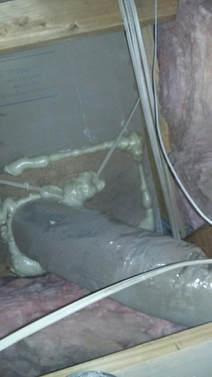 Two story homes and ranch style homes are particularly guilty of committing air sealing sins. Air sealing is separating the attic from the conditioned house and you would think that the framers, drywallers and A/C contractors would know this when they build the house but surprisingly in most homes we find a lack of boundary between the attic and home. Often times there is no barrier between the attic and the house except for a piece of ¾” drywall that is all that is stopping the Arizona summer heat from entering the home. Of course there should be a nice thick blanket of 12” of insulation on top of the drywall but no, during our attic inspections we often find these attic air sealing sins and need to air seal the home before we blow the insulation. Why Is Air Sealing Necessary Before Blowing Insulation? 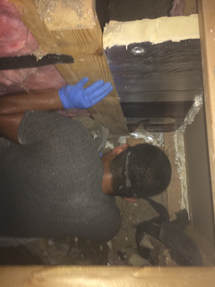 If you take away nothing else from this blog, know that insulation is not an air barrier. What does that mean? It means that attic insulation does not stop the air from passing through it, so even if you pile 24” of insulation in the attic, hot attic air will still pass through the insulation and get into the home. Think of a sweater on a windy day, that sweater is still letting a ton of air through. You need a wind breaker on top of your sweater to keep you warm just like your insulation needs an air barrier to be effective. What qualifies as an air barrier? Drywall does, as does foam board, plywood, and spray foam when installed continuously to seal the cavity air tight. Don’t make the mistake of typical insulation contractors and blow-and-go and air seal your home before you insulate. What needs to be air sealed? Soffits, wall chases, plant shelves, top plates, exhaust fans, boot to sheet rock gaps, thermostat wires, electrical wires and plumbing penetrations. A home energy audit can help identify how leaky your home is and where the majority of leakage is coming from (it’s not your windows if you live in Arizona). 2. Kneewalls Are Neglected. A kneewall is a vertical wall in your home that has a back side in the attic. Kneewalls are a nice architectural feature that homeowners use the horizontal shelves as a place to hold decorations or they may be functional to change from a vaulted part of the house to a flat ceiling in a bedroom or office. The fact is that kneewalls are also in the attic and just like the drywall ceiling, they need to be properly insulated. Many a times our thermal cameras will reveal how poorly insulated kneewalls are. If the entire attic floor is well insulated but the kneewalls are bare, guess where the all the attic heat is going to enter your home through? That’s right, your kneewalls. Heat flows in the path of least resistance and having improperly insulated kneewalls will compromise the entire attic insulation. 3. Taking Care Of The Attic Hatch. I love when insulation contractors throw a fiberglass batt across the attic hatch and call it good. It’s like telling your kids to clean their room and you come back to see a half-ass job and them preoccupied with whatever they were doing before. Nice try, but that’s a fail. You want a permanent solution and our method is to glue a couple sheets of thick foam board to the attic hatch so the hatch is permanently insulated. Or have you ever noticed how the insulation conveniently tapers down around the attic hatch because no one figured you could build a dam around the hatch and insulation right up to the hatch? All interior attic hatches need to be insulated with foam board and have a dam built high enough so insulation can be the same depth right up to the attic hatch. Honorable Mentions – Insulation Tips and Common Mistakes To Avoid 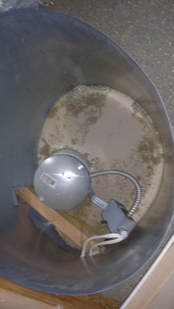
What Insulation Upgrades Do Not Need To Be Done This list includes common insulation misconceptions, upgrades that won’t save you money on your energy bills but they may or may not be beneficial in other ways.
By doing these upgrades before you insulate your home, you’ll be sure to have a properly sealed and insulated home. Find out more: Does your attic insulation need to be removed? How much does insulation cost? SRP rebates for insulation. |
Sign Up For Your Home Energy AuditFIND YOUR HOME TYPERanch HomesSingle Story, Spec HomesTwo Story, Spec HomesTri-Level HomesPre-1990 Custom HomePost-1990 Custom HomeDon't See Your Home? Find Your City Below!Archives
April 2024
Copyright Notice©2009 – 2023
All Rights Reserved |

